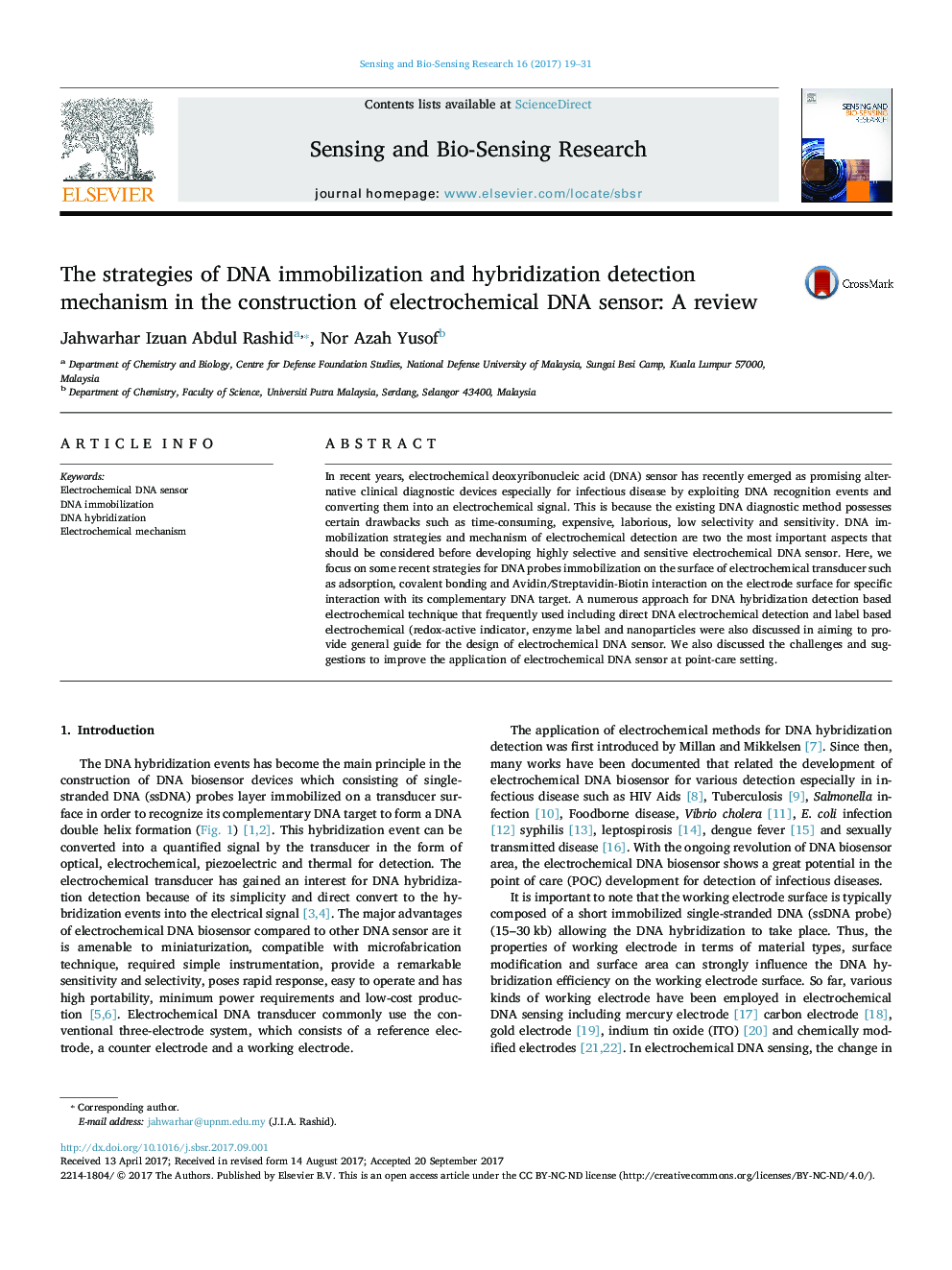| Article ID | Journal | Published Year | Pages | File Type |
|---|---|---|---|---|
| 5019631 | Sensing and Bio-Sensing Research | 2017 | 13 Pages |
In recent years, electrochemical deoxyribonucleic acid (DNA) sensor has recently emerged as promising alternative clinical diagnostic devices especially for infectious disease by exploiting DNA recognition events and converting them into an electrochemical signal. This is because the existing DNA diagnostic method possesses certain drawbacks such as time-consuming, expensive, laborious, low selectivity and sensitivity. DNA immobilization strategies and mechanism of electrochemical detection are two the most important aspects that should be considered before developing highly selective and sensitive electrochemical DNA sensor. Here, we focus on some recent strategies for DNA probes immobilization on the surface of electrochemical transducer such as adsorption, covalent bonding and Avidin/Streptavidin-Biotin interaction on the electrode surface for specific interaction with its complementary DNA target. A numerous approach for DNA hybridization detection based electrochemical technique that frequently used including direct DNA electrochemical detection and label based electrochemical (redox-active indicator, enzyme label and nanoparticles were also discussed in aiming to provide general guide for the design of electrochemical DNA sensor. We also discussed the challenges and suggestions to improve the application of electrochemical DNA sensor at point-care setting.
